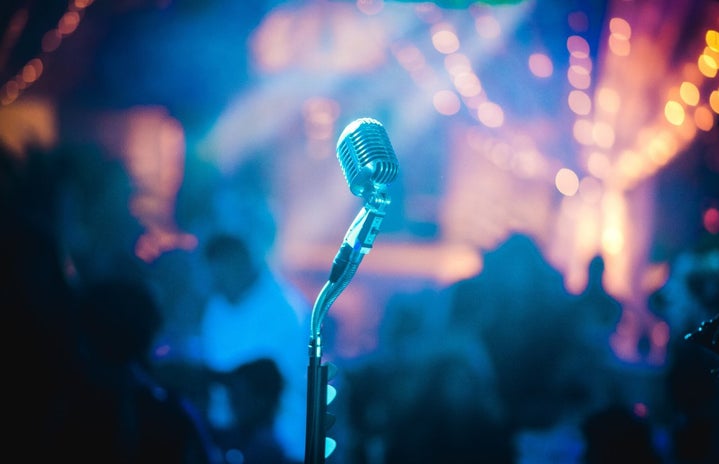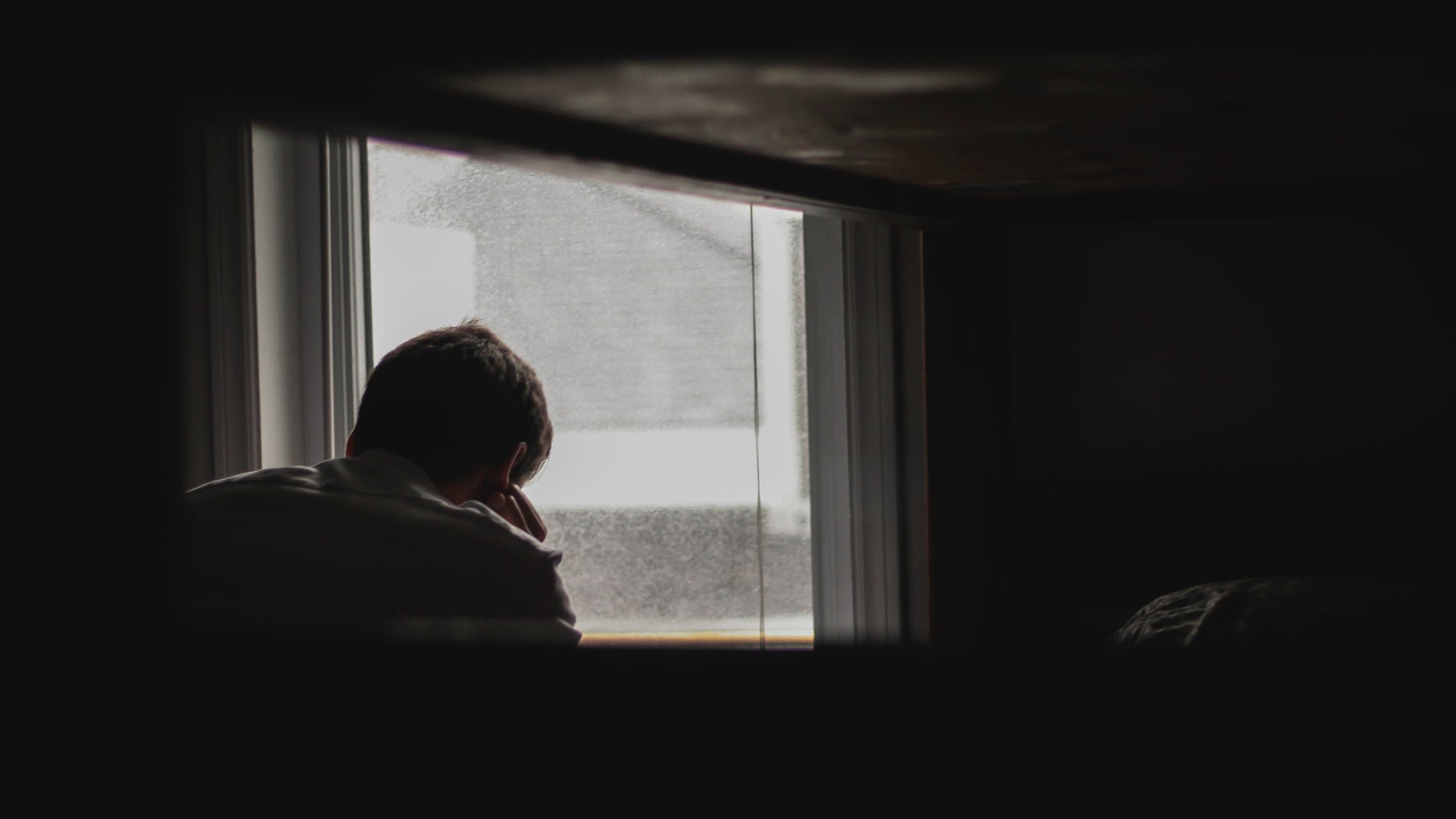After a night of performing, rapper WickDadon takes note of his surroundings as he walks back to his car. He knows not to have any jewelry dangling on his neck. He knows to have his phone tucked into his back pocket instead of being on it. It’s instinct.
Wick, née Chris Jones, started his rapping career in his senior year of high school. Playboi Carti, Lil Baby, and the like inspired Jones. He picked up the mic and started scribbling down his first rhymes. Music was a crutch for Jones, even when he was little. It comforted him when the pressures of adolescence were bubbling up, and Jones wants to extend back this comfort to his fans.
And Jones loves it, the cheer of the fans and the lyrics sliding perfectly onto his beats.
All Jones wants to do is rap. But with the current violence surrounding trap rap, he may not make it out alive.
For years, famous rappers have been murdered for doing the most mundane of tasks. Picking up a motorcycle, visiting a family-owned bakery, eating lunch with their partner. People have coughed up answers on why these murders happen year after year. Figures like New York City Mayor Eric Adams have been openly critical of the violence that drill rap promotes.
But these murders are emblematic of a bigger issue. An issue that has to do with more than just robbers trying to make a quick buck.
The economic disadvantages of Black people started when the first slave pressed their toe into American soil. But even after Black people were “awarded” their freedom and menial protections, they still faced systemic issues.
Redlining and segregation of housing districts during the ’40s caused Black people to be pushed out of suburban areas. Redlining didn’t allow Black families to purchase housing in areas with higher quality education and more opportunities for moving up the social ladder. This was allowed by the Federal Housing Administration. Not only that, but access to low-quality education and lower pay caused some Black families to be stuffed into urban areas.
The National Gang Center found that some fled to the North in the ‘50s, looking for opportunities not found in the South.
They were met with racism.
So Black men responded, forming social protective groups that would eventually become the foundation for gangs in the North. Veronica Newton, a sociologist at Georgia State University, said that West Coast gangs formed initially to protect communities against the police. They were a boys club, a place for young Black men to convene and to “fight for fighting sake.”
That was until the ‘80s.
Michelle Alexander, a legal scholar, claimed that guns were placed in these impoverished communities by the government. Already with a lack of quality education and opportunities, these neighborhoods quickly delved into a myriad of violence. The pitchforks used to be pointed at racist police officers, now they were pointed at each other. Cities became divided into invisible lines, and young Black men were fighting for streets that don’t belong to them.
Compound this with the crack epidemic.
During the ‘80s, there was an increase in the shipping of crack cocaine to the United States by Colombian cartels. It affected major cities like New York and Washington D.C, specifically affecting the lower-income areas. People were getting addicted, and blowing money on the powder instead of caring for their families. Some impoverished Black men were selling crack to make ends meet.
And crack sold. A lot.
Newton went on to explain that the “underground economy” of drugs only started out of a lack of resources. Though the economy is an international issue, the level of violence associated with these gangs is patently American.
Then President Ronald Reagan responded to the booming guns and crack addicts by expanding the War on Drugs, a campaign to end the crack epidemic. Then President Richard Nixon was actually the one to declare drugs “the number one public enemy” in 1971.
This included passing anti-drug laws and increasing the criminalization of drug dealers. The kicker? The availability of illicit drugs hasn’t decreased all that much since the “war.”
It also put a lot of Black men in jail.
Newton called it “social disorganization” and it was purposeful. These communities were lacking substantial wealth because Black people were getting paid less. Planted guns and drugs ravished the community even more, and with over-policing in these areas, people resorted to crime.
“Crime is the biggest indicator of job loss,” said Newton.
If Newton’s expertise on the criminalization of drugs purposely impoverishing and incarcerating black people wasn’t enough, John Ehrlichman, the assistant to the President for Domestic Affairs under Nixon spelled it out to Dan Baum.
“You want to know what this [war on drugs] was really all about? The Nixon campaign in 1968, and the Nixon White House after that, had two enemies: the antiwar left and black people. You understand what I’m saying?”
On top of that, some of the citizens of these gang wastelands are born to single mothers. Black women only make 65 cents of what a white man makes, and nearly a third of single mothers live in poverty. Even in the ’80s, the trend of black single motherhood was concerning to some. The New York Times called it the “breakup of black families,” and found a correlation between black matriarchs and poverty.
Black spokesmen at the time knew it would lead to a generation of disenfranchisement.
But even with gang culture transforming from trading noogies to trading bullets, one thing didn’t change. Unity.
Repping sets, hitting licks, there’s a sense of community with gangs. It’s not just physical needs that aren’t being met, it’s emotional ones too.
And being entrenched in an orchestrated land of poverty doesn’t help with that.
Repeated exposure to violence and a lack of security can cause post-traumatic stress disorder, a mental illness that’s borne from intense trauma. It can cause extended feelings of rage, isolation and difficulty coping with situations. In fact, rapper G Herbo, née Herbert Wright III, detailed his traumas of growing up in an impoverished area with his 2020 album, PTSD.
To recap. Black people struggle to find housing and are paid less than white people, causing some of them to flee to the North to find opportunities and better treatment. Then, after facing racism, they form protective groups that eventually grow into gangs, which causes violence in these impoverished areas. Nixon and Reagan stepped in to regulate the increased presence of drugs in America, effectively criminalizing Black dealers who were selling drugs to make ends meet. With only a mother as head of the house who struggles to take care of her kids, they grow up without quality education and resources for healthcare. And with a lack of resources, some are willing to murder whatever rapper steps foot into their town just for their chain.
And the record labels that these newly founded stars are signed to also play a role in this cycle of violence.
“I definitely believe that record labels encourage the beef and they look for young artists who are in the midst of beef to sign,” said Wick.
He went on to explain how the feud between Tupac Shakur and Biggie benefited the record labels. In the end, both Tupac and Biggie ended up in a pool of blood.
But, a lot of the rappers who have been slain, and even WickDadon himself, have been trap rappers. For those who don’t know, a trap rapper is someone who raps about getting money, drug usage and street violence. This is where some people, like Mayor Adams, place fault on the rappers.
“You know, I mean, we pulled Trump off Twitter because of what he was spewing, yet we are allowing music — displaying of guns, violence — we’re allowing it to stay on these sites,” said Adams at a press conference in February.
Mayor Adams has backtracked from these statements. But, the blame on trap rappers for creating their own doom is not just the opinion of New York City’s mayor.
Data from the Prevention Research Center of the Pacific Institute for Research and Evaluation suggested a link between young people listening to rap and increases alcohol consumption and a tendency for violent acts.
Even Newton recognized the “self-fulfilling prophecy” that these rappers dig for themselves. They’re trying to navigate a world of record deals while trying to live what they’re rapping about. The glorification of violence, the causal misogyny, the crystal chains, it’s all an expression of dominance.
Everyone has agency.
But as it’s been seen, with a lack of opportunities, jailed or dead fathers and a whirlwind of violence surrounding them, rapping about their lived experiences is one of the only ways out for some of these young men. For the men that don’t get out, some of them resort to doing the thing they’ve been conditioned to do: act out of scarcity.
As for Jones, he didn’t grow up surrounded by cocaine dust and shattered windows. His home life was sheltered. Mom and Dad always there to support him. He graduated high school, performed at Morehouse College and has dedicated himself to operating in a way that won’t get him killed.
Because he knows he’s still in danger.
Even with a stable home life and people supporting him, he knows that simply picking up the mic and performing the lyrics that came from his heart puts a target on his back. Going into the studio, making the melodies for his songs, it’s an act of courage. Because rappers are at a higher risk of homicide compared to other genres. Because of the systems and policies that put gang culture and mass incarceration in place.
So PNB Rock’s murder isn’t the first. It’s definitely not the last. And if the government and rappers don’t understand the role they’ve taken in orchestrating these situations for hungry robbers or jaded street rivals to murder another popular star, it’ll continue to happen.
It may even happen to Wick.




